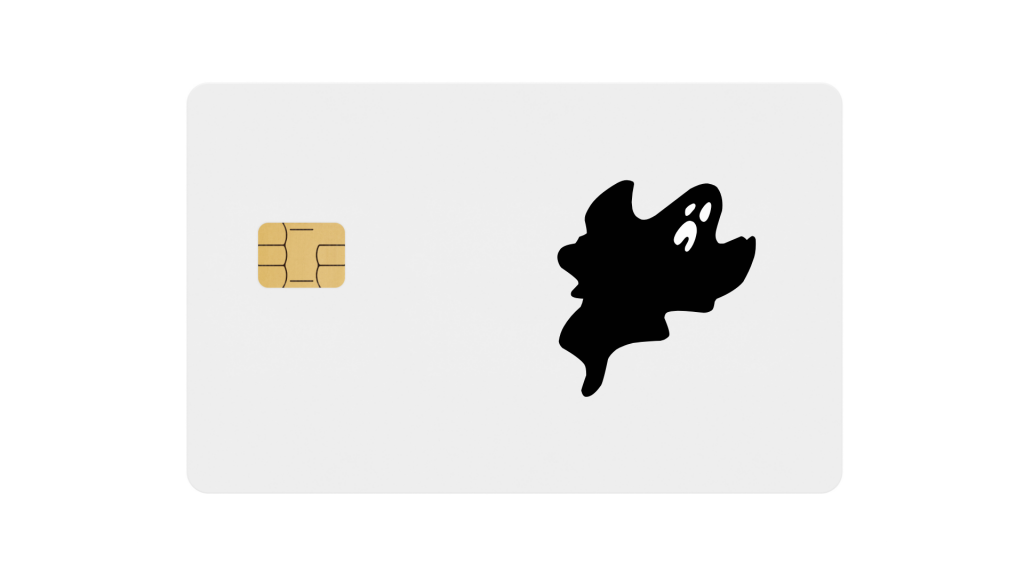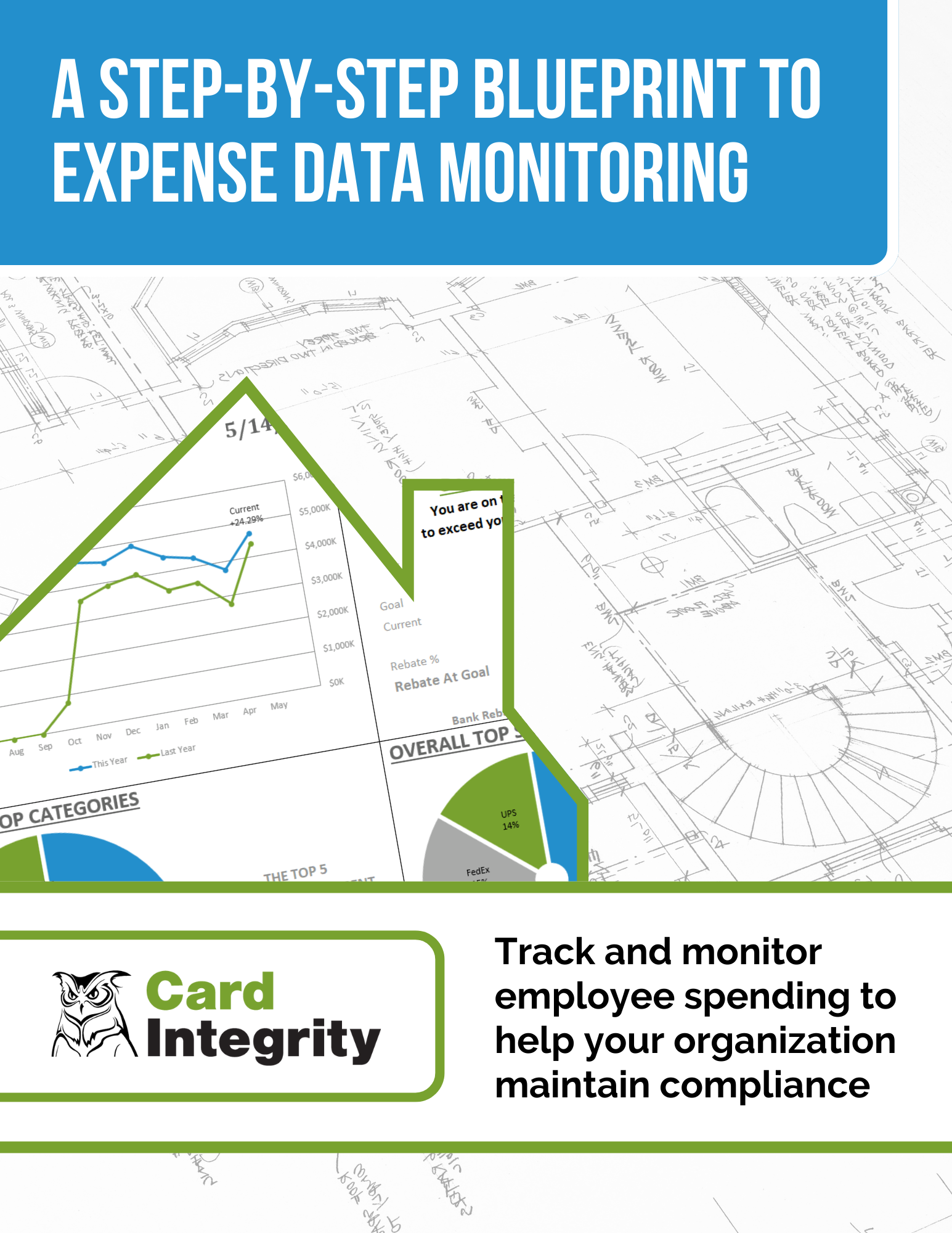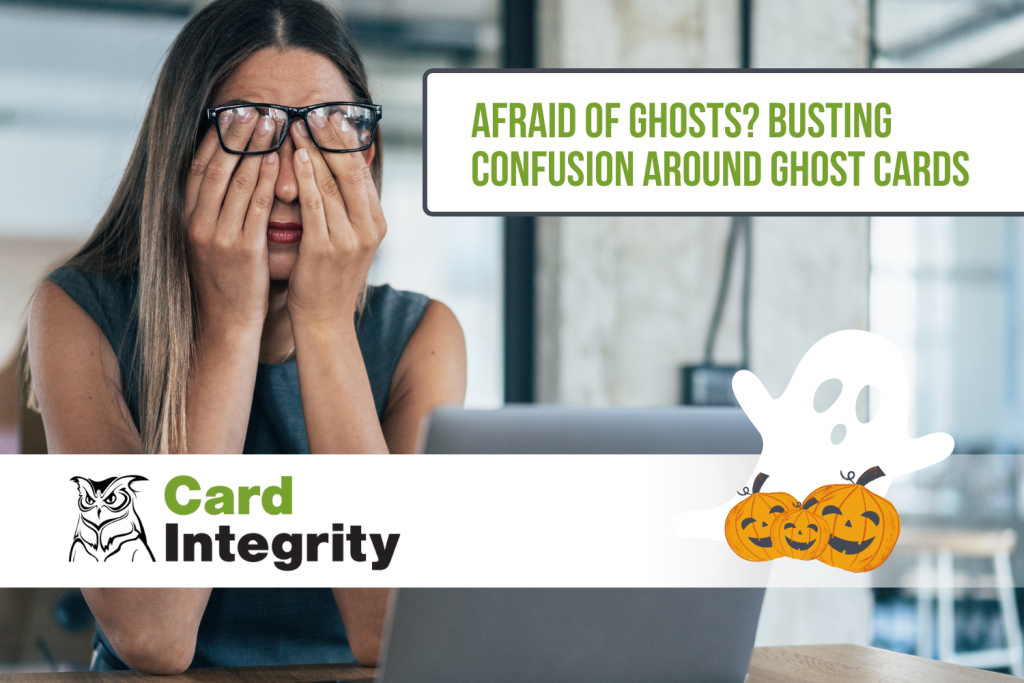Most people enjoy a good ghost story — right? Well, there’s one in particular that businesses hate, and that’s the mishandling of ghost cards, especially in combination with their purchasing card (P-Card) programs.
Table of Contents
What is a ghost card?
A ghost card is not really a “card” at all (hence the “ghost” adjective). It’s an account that gets drawn on for purchases much like that of a P-Card — but there is no physical card involved. Instead, a specific supplier extends an account number to another organization for the sole purpose of that organization making purchases from that particular supplier. It is a “card-less” purchasing account, used with and for purchases from one specific vendor. “Ghost card” and “ghost account” are interchangeable phrases referencing the same concept.
Is a ghost card the same thing as a virtual card?
Ghost cards and virtual cards are similar concepts with a few key differences. Like a ghost card, virtual cards represent a “card-less” method of purchasing for companies, but virtual cards expire upon a single use. Businesses also often limit virtual cards to the amount of a single purchase from a specific vendor. Ghost cards don’t have these limitations. In addition, the term “virtual card” is often used interchangeably with “ghost card” despite these technical differences, adding to the confusion. Different organizations may have different terminology.

How things can get scary
So, what’s the problem with ghost cards? Well, for some, the concept of a ghost card is not so simple — or at least, it has not been properly conveyed.
Confusion is the issue. An organization’s purchasers can become confused between the use of these card-less accounts and P-Cards, and as such, mishandle the use of both. The user does so by mistakenly and inappropriately using a P-Card to buy items from a supplier who has already issued a ghost card to the purchasing organization, specifically for such purchases.
In just one transaction, a purchaser has 1) managed to misuse his or her P-Card and 2) failed to follow the proper procedure by neglecting to use the ghost card. It’s easy to see how messy a financial situation can get when the correct and established process is no longer being followed.
The benefits of ghost cards
Despite the confusion and the problems that confusion can create, there are still a number of benefits to using ghost accounts that you don’t want to disregard. Ghost accounts:
- Are completely digital. Since there is only an account number involved, there is no physical card that can be lost, stolen, or handed off to and used by someone else (who may or may not be authorized). Nor is there a need to spend time and money on the production and routing of hard plastic cards.
- Provide added security. Both the purchasing organization and the supplier benefit from the security a ghost account offers. Since the account number is known not only to the user but also to the supplier (and only to those two parties), that information does not need to be communicated via phone lines, cell towers, or email correspondence, creating a much more secure way of doing business. By the same token, the account number cannot be “faked” by the purchaser, since the vendor already knows what it’s supposed to be.
- Allow for spending limits. Ghost accounts can have a monthly/cycle limit, or in the case of a “dynamic ghost account,” specific limits can be turned on and off as deemed necessary. Either the vendor or the purchasing organization — or both — can create or request such limits.
- Usually won’t affect your credit. Unlike P-Cards, which banks treat much like credit cards, creating and using a ghost account is far less likely to make an impact on an organization’s credit status.
- Are very specific. There’s far less chance with a ghost card that money will be spent inappropriately or with the wrong supplier, since the supplier itself holds and manages the account.
Busting the confusion with ghost cards
Considering that ghost accounts could be extremely beneficial to your organization, how can your organization use them and still combat the con of confusion? It’s easy! With the help of Card Integrity, you can take these two simple steps to avoid being haunted by misuse:
1) Monitor. It’s only when you see misuse happening, that you can stop it — and Card Integrity can help. Card Integrity monitors ghost accounts to reveal spending and alerts clients when someone has used a P-Card to purchase items that were supposed to be handled by an existing ghost card.
2) Educate. Nip confusion in the bud by teaching your purchasers the difference between using P-Cards and using ghost accounts before they begin to buy. When the card users clearly understand how both accounts work and what accounts to use when, you’ll reduce the risk of misuse. To ensure that your employees are not only informed, but truly educated, according to your own unique procedures that have been specifically designed to reduce any confusion, set up your training using Card Integrity’s TrainingWISE service.
Shine a light on ghost accounts with our free blueprint to expense monitoring
When organizations monitor expenses, the greatest benefit is having stronger controls to prevent any compliance issues or fraud that can arise through ghost accounts and numerous other blind spots. For a better way for you to look at the strength of your expense monitoring, Card Integrity created a step-by-step blueprint to expense data monitoring to help boost compliance, deter fraud, and communicate spend data insights. It can help you get your expense monitoring program off the ground if it doesn’t really exist yet, or fortify it if it needs some help. You can access it for free below.

Blog post originally published October 18, 2016. Updated February 27, 2025.



